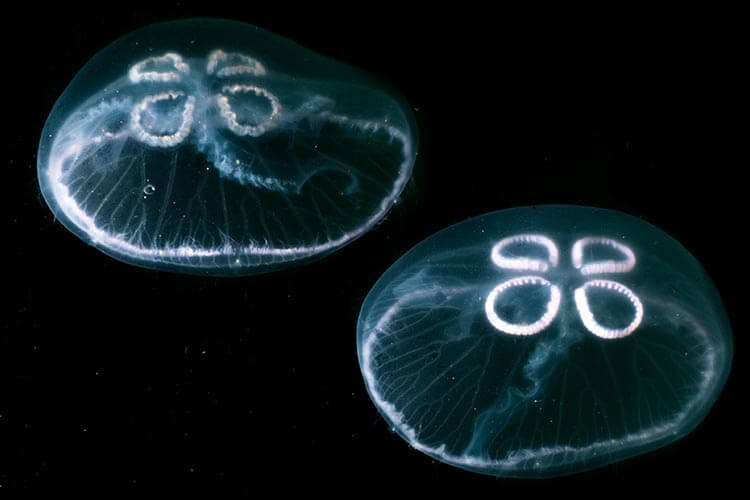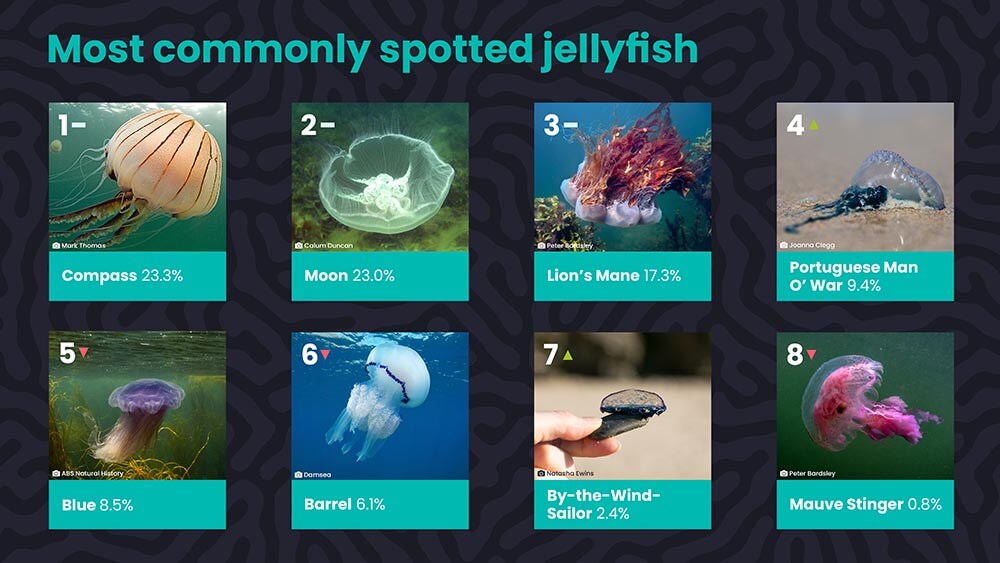
By DIVE Staff
The Marine Conservation Society‘s (MCS) latest Wildlife Sightings report, compiled from jellyfish and marine turtle sightings data submitted by members of the public, has identified the compass jellyfish as the most common species found in UK waters for the second year running.
The charity’s long-running citizen science project collates data from sightings reports, seeking to identify trends in the distribution of jellyfish – and the turtles that inevitably follow one of their favourite food sources – around the shores of the UK and Ireland.
Changes in when and where particular species are spotted can help scientists to better understand how the ocean may be changing in response to environmental factors such as climate change.
A total of 1,315 jellyfish sightings were reported between 1 October 2021 and 30 September 2022. Eleven different species were recorded; eight of which are common to the UK.
The compass jellyfish was the most reported species, with 23.3 per cent of total sightings, closely followed by moon jellyfish with 23 per cent, which were often seen in ‘smacks’ (groups of jellyfish) of more than 100.

Storms in October 2021 and February 2022 drove an increased number of the jellyfish-like Portuguese man o’ war towards the southwest coast of England and the west coast of Scotland, with sightings up by 2 per cent on the previous year. Although the Portuguese man o’ war is a hydrozoan (a colony of individual animals that function together as a single entity), rather than a jellyfish, it is including in the sightings database for both its appearance and status as prey for loggerhead turtles. This year, violet sea snails, which float on the surface in bubble rafts feeding on Portuguese man o’ wars were also sighted..
MCS reports that ‘other” species – those not commonly encountered in UK waters – have also increased in numbers, rising from 5 to 9 per cent of the total. Among these were the bioluminescent crystal jellyfish, which made up 3 per cent of total sightings and sea gooseberries at 1 per cent – the highest figures reported to date. The presence of less common jellyfish in the reports may indicate how changes in temperature might be affecting the diversity of jellyfish species around the UK and Ireland.
Jellyfish are especially appealing for marine turtles, which visit UK waters in the summer months to feed on them. 11 turtles were also reported, six of which were live leatherback turtles, spotted on the coast of Scotland. Leatherbacks are the largest turtle species with a diet mainly consisting of jellyfish.
More about jellyfish and man o’ wars

‘We use these sightings, alongside scientists, to spot trends in the distribution of jellyfish and marine turtles around the UK,’ said Amy Pilsbury, Citizen Science Project Lead at the Marine Conservation Society. ‘Investigating the relationships between species can help us to discover more about our amazing underwater world and how it might be changing in response to things like climate change. A huge thank you to everyone who reported their sightings – with more reports we’re able to understand even more about our ocean.”
The charity’s Wildlife Sightings report includes a map of all reported jellyfish and turtle sightings, a breakdown of each jellyfish species reported, a map of Portuguese Man O’ War sightings, and the number of sightings reported each month. The report’s turtle data will contribute to the Turtle Implementation Group’s annual ‘British & Irish Marine Turtle Strandings Report‘, which will be released in March 2023.
The charity is encouraging members of the public to continue to report any species they see, as some jellyfish continue to visit UK waters during the in winter months. For more information on the Wildlife Sightings project and to report a jellyfish or turtle sighting, head to the Marine Conservation Society’s website at www.mcsuk.org.


